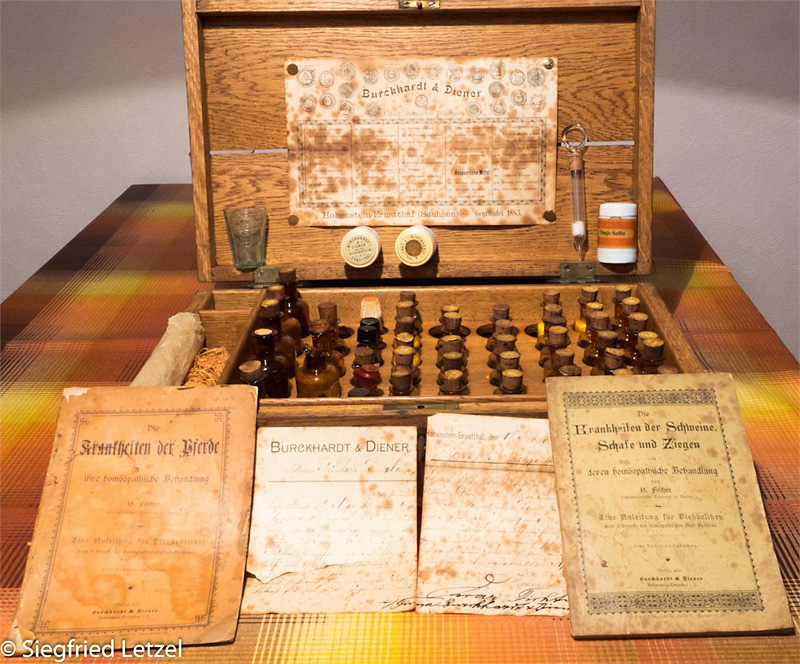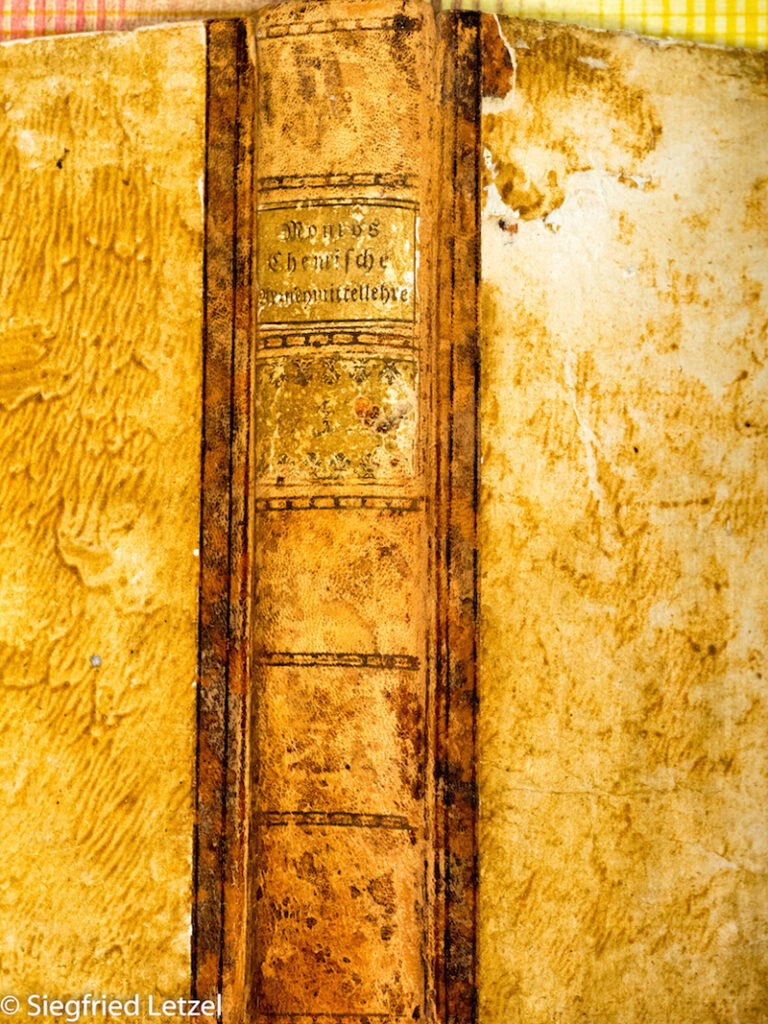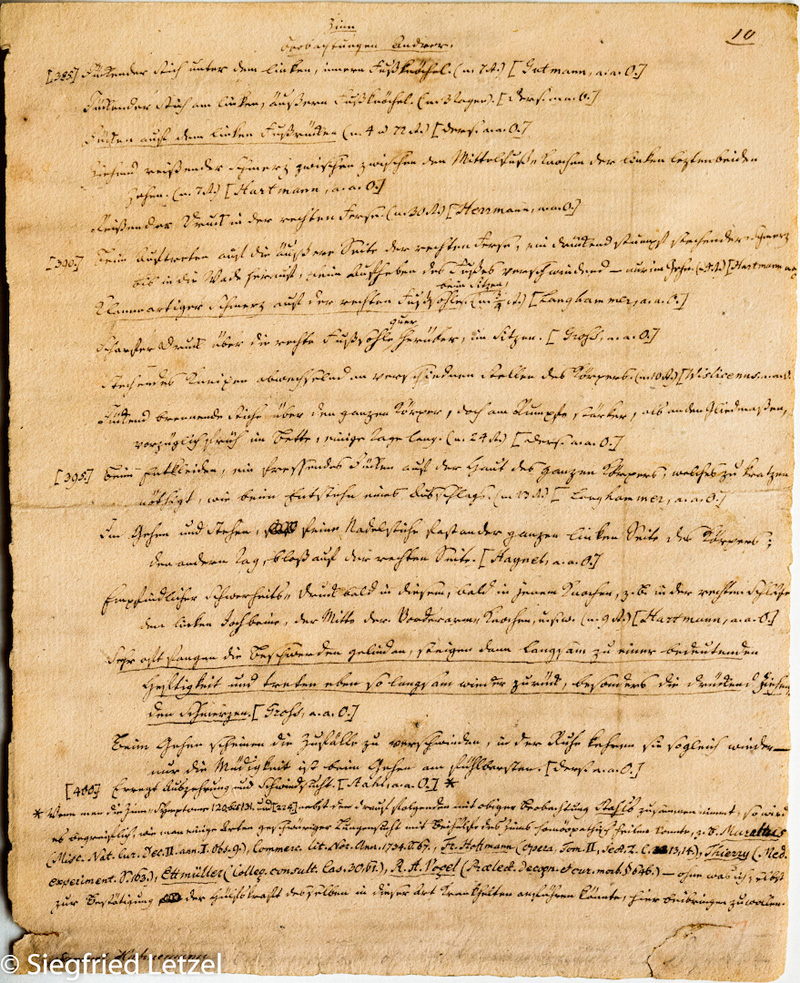Rare pieces
Siegfried Letzel
Rare pieces owned by the
Hahnemann Center
The life and work of Samuel Hahnemann: Behind an original manuscript lies a fascinating story. It was lost for years and is now in the possession of the International Hahnemann Center.
Rare horse pharmacy
The year 2020 has started sensationally for us. We auctioned a rare homeopathic horse pharmacy with accessories from 1915. We also acquired two rare Hahnemann translations from English from the pre-Torgau period: Monro’s “Chemical Pharmaceutical Materia Medica” from 1794 (Volume 1) and the “New Edinburgh Dispensatory” in the 1798 edition (Part 2).

Surprisingly, a collector of homeopathic literature offered us a booklet that we had never expected to add to our collection in Torgau, as it had virtually disappeared from the antiques market for historical books: it is the first extensive work by Hahnemann that he wrote in Torgau.
It is “Aesculapius on the Scales,” published in 1805. This little book is of outstanding importance because it marked Hahnemann’s definitive break with conventional medicine and urged a fundamental reform of the entire field of pharmacology. In this work, he criticizes and provides numerous examples of the inadequacies of medicine at that time. His own “medical art” of this kind had driven him to resignation. None of the common treatment methods had achieved any significant success, and he identified almost all cures as self-healing. The therapeutic nihilism already practiced in Vienna, which relied on medical waiting and non-intervention, showed surprising success. And since Hahnemann had already discovered the principle of similars in the selection of remedies, he now believed he held the key to a new one (homeopathy).
But we must describe the access to a manuscript written by Dr. Hahnemann as truly sensational. Throughout his life, he refined and refined his therapeutic method through his own experiences and those of others. This led to the publication of six updated editions of his textbook “Organon of Medicine .” He wrote his innovations in the margins of his own copies or inserted notes between the relevant pages. It was different with his six-volume “Pure Materia Medica” —there were so many additions and corrections that he rewrote the books entirely for the new editions.

Missing manuscripts
Dr. Wilmar Schwabe of Leipzig, the largest manufacturer of homeopathic remedies, acquired the manuscript for the second edition of the sixth volume of Hahnemann’s great work and had it bound into a book. It is housed at the Institute for the History of Medicine of the Robert Bosch Foundation in Stuttgart. However, the manuscripts of the last two remedies in this volume (which were later published), Wütherich and Zinn, are missing. The whereabouts of these pages are unknown, and they are therefore considered lost.
Now we have been entrusted with a leaf from the Zinn manuscript. I visited the Institute for the History of Medicine and, together with the head of the archive, was able to compare this manuscript leaf with those in the Schwabe Collection. The paper size, material, script, and age—everything matches. But our leaf was never bound into the Schwabe Collection book; no pages were removed. Thus, the manuscript leaves had already been separated. Our search for the remaining other leaves has so far yielded no results; an early split in the collection is becoming increasingly likely.
The International Hahnemann Centre now has this only known sheet in its care, as well as the first print of Hahnemann’s book from 1827, in which the text of the manuscript can be read word for word.

